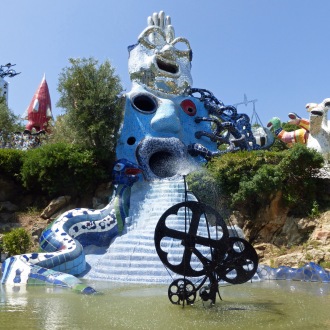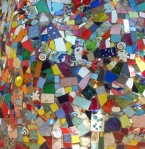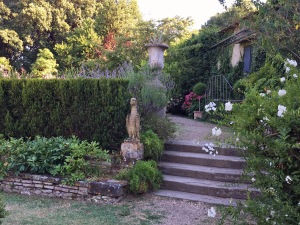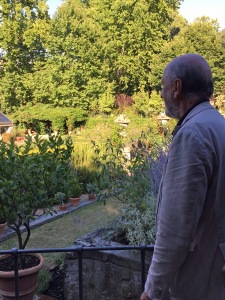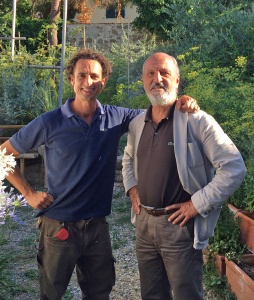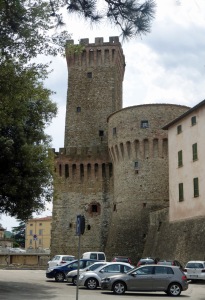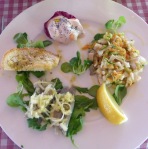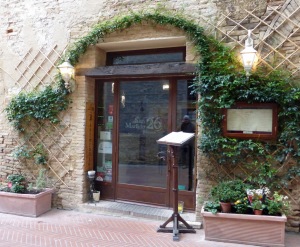 Ristorante San Martino 26
Ristorante San Martino 26
Via S. Martino 26
53037 San Gimignano (SI)
0577-940-483
http://www.ristorantesanmartino26.it
Owner: Fabio Pernarella
Chef: Ardit Curri
Fabio Pernarella and his family bring 27 years of restaurant experience to this relatively new enterprise in San Gimignano. Perucà is their other ristorante, where their entry into the restaurant business had its humble beginnings. For over two decades it has been a most popular Tuscan restaurant, not to be missed. But in this city of fabled towers, Chef Ardit Curri, a true culinary artist, offers a cuisine that towers above the rest, taking a traditional way of cooking to new and creative heights at Ristorante San Martino 26. Like the cuisine, the ambiance is a harmony of light and contemporary décor, blending beautifully with its ancient stone walls and cellars.
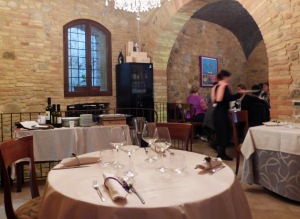 The only way to really explore these tempting innovations is to sit back and enjoy one of their seasonal tasting menus. Journey along with the chef and let your waiter pair the wines with the various courses, making this adventure a celebration of all that is good and beautiful in Tuscany. Each course was brought to the table like a small gift, beautifully presented, familiar yet surprising: like Il Fegatino Toscano, chicken liver with vin santo on a home-made pan brioche or the poached egg yolk hidden in a mound of whipped egg-whites and Parmesan, topped with truffles. We particularly enjoyed La Chitarrina, fine hand-made egg noodles made spicy with aglio e olio then coated with a more delicate creamed anchovy and shrimp sauce.
The only way to really explore these tempting innovations is to sit back and enjoy one of their seasonal tasting menus. Journey along with the chef and let your waiter pair the wines with the various courses, making this adventure a celebration of all that is good and beautiful in Tuscany. Each course was brought to the table like a small gift, beautifully presented, familiar yet surprising: like Il Fegatino Toscano, chicken liver with vin santo on a home-made pan brioche or the poached egg yolk hidden in a mound of whipped egg-whites and Parmesan, topped with truffles. We particularly enjoyed La Chitarrina, fine hand-made egg noodles made spicy with aglio e olio then coated with a more delicate creamed anchovy and shrimp sauce.
Our wines included the famous Vernaccia wine of San Gimignano, a crisp white wine locally produced from the Vernaccia grape. Earliest mention of this wine dates back to records from the 13th century, but since the Renaissance, it has been considered one of Italy’s finest wines. With our main entrée, roast pork with steamed carrot and purée of green beans, we sipped a Super Tuscan Peperino. The sweet Moscadello di Montalcino, with its gem-like topaz color, accompanied our dessert and it was a match made in paradiso. In spite of what seemed like an endless parade of dishes, because portions and flavors were balanced to perfection, we left completely satisfied at meal’s end, ready to explore the treasures of this medieval city.

Chef Ardit Curri
copyright ginda simpson – http://www.rooms-withaview.com – http://www.gindasimpson.com

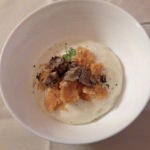





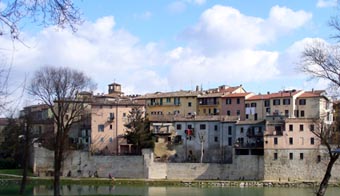
 mitar
mitar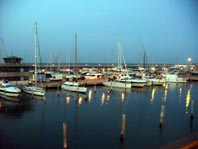









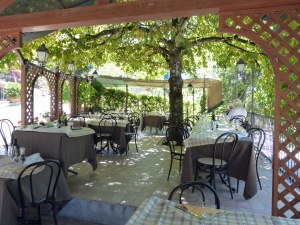







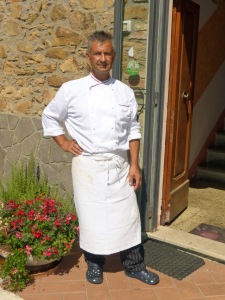
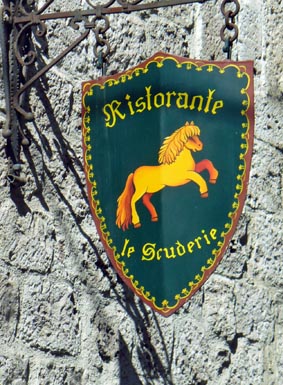 Ristorante Le Scuderie
Ristorante Le Scuderie We dine at a corner window table from which we can admire the lovely garden or the large stone wood-burning
We dine at a corner window table from which we can admire the lovely garden or the large stone wood-burning 